The three best bee-friendly hedge fences for your garden are native flowering hedgerows with hawthorn and viburnum, mixed berry-producing barriers including blackberry and raspberry, and layered hedge designs with varied bloom times. You’ll create ecological corridors that increase pollinator diversity by up to 50% while defining beautiful garden boundaries. These living fences offer food, shelter, and nesting sites for bees year-round. Discover how these options transform your garden into a buzzing sanctuary.
Native Flowering Hedgerows: Nature’s Pollinator Highway

While traditional fences merely define property lines, native flowering hedgerows transform boundaries into vibrant ecological corridors.
By planting these living fences, you’re creating essential food sources for bees, butterflies, and other pollinators struggling with habitat loss.
Species like hawthorn and viburnum provide seasonal blooms that can increase local pollinator diversity by up to 50%. The dense foliage offers more than beauty—it provides vital shelter and nesting sites for various beneficial insects and birds.
Planting native hawthorn and viburnum creates vibrant sanctuaries that double pollinator diversity while offering crucial shelter for local wildlife.
You’ll notice improved pollination rates in your garden as these sustainable environments attract more diverse pollinator activity.
Your hedgerow isn’t just beautiful; it’s a functional component of local biodiversity. When you choose native flowering hedgerows over conventional barriers, you’re not just defining your space—you’re supporting entire ecosystems right in your backyard.
Mixed Berry-Producing Hedge Barriers for Year-Round Bee Support
Unlike conventional fencing options, mixed berry-producing hedges offer a delicious dual benefit for your garden and local pollinators.
By incorporating varieties like Hawthorn, Blackberry, Blueberry, and Raspberry, you’ll create a bee-friendly environment that provides essential nectar and pollen throughout the growing season.
These berry-producing hedges deliver continuous flowering from late spring through early fall, supporting bees when they’re most active.
You’ll enjoy both enhanced garden aesthetics and edible fruits, while simultaneously nurturing local biodiversity.
For maximum impact, select plants with staggered blooming times to establish a dynamic ecosystem that supports different bee species year-round.
Dense, attractive barriers formed by Currants and Gooseberries not only define your garden’s boundaries but also create pollinator highways that contribute to healthier bee populations in your area.
Layered Hedge Designs for Maximum Nectar Production
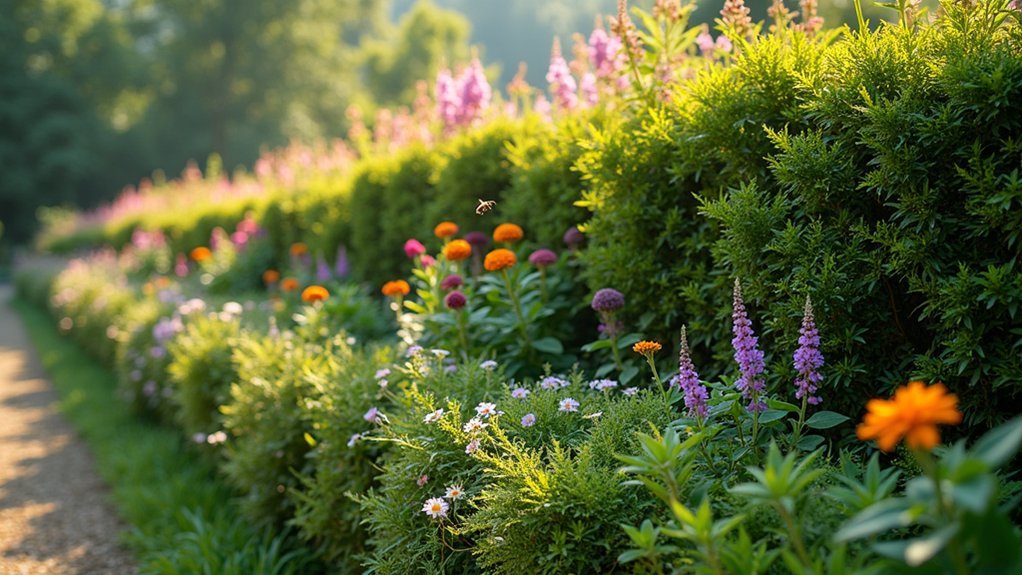
Creating a layered hedge design transforms your garden boundary into a nectar-rich haven for bees and other pollinators.
You’ll increase nectar production by combining flowering shrubs that bloom at different times, ensuring continuous food sources throughout the growing season.
- Mix native and non-native species like viburnum and honeysuckle to attract diverse pollinators and support biodiversity.
- Incorporate nectar-rich flowers such as abelia and buttonbush to make your hedge irresistible to bees.
- Design with varying heights to maximize sunlight exposure, enhancing flower production.
- Implement regular maintenance with strategic pruning to encourage more prolific blooming.
- Stagger bloom times among your selected shrubs to provide year-round nectar access.
Frequently Asked Questions
What Is the Best Hedge for Bees?
For the best bee-friendly hedge, you’ll want to contemplate honeysuckle. It provides sweet nectar-filled flowers that bees love, grows quickly, and can effectively cover trellises or fences in your garden.
What Shrub Makes a Good Privacy Hedge?
For privacy hedges, you’ll find great success with Privet, which grows quickly and creates dense coverage. Boxwood offers neat shapes, while Cherry Laurel, Photinia, and Indian Hawthorn all provide excellent screening with attractive foliage.
What Is the Best Wildlife Friendly Hedge?
The best wildlife-friendly hedge combines native plants like hawthorn and honeysuckle with non-natives such as viburnum. You’ll create a thriving ecosystem when you mix species that flower at different times throughout the year.
What Is the Best Shrub for Butterflies and Bees?
For butterflies and bees, you’ll find Buddleja (butterfly bush) is your best choice. It’s packed with nectar-rich flowers that pollinators can’t resist. Honeysuckle and Abelia are excellent alternatives with long blooming periods.
In Summary
You’ve now discovered three perfect bee-friendly hedge options for your garden. Whether you choose native flowering hedgerows, mixed berry-producing barriers, or layered designs, you’re creating crucial habitat for our pollinator friends. By planting these living fences, you’ll enjoy both beautiful boundaries and the satisfying buzz of happy bees. Your garden isn’t just a space for you anymore—it’s become a crucial sanctuary in your local ecosystem.
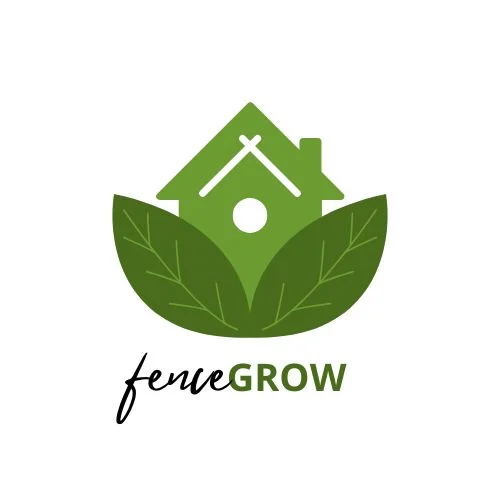
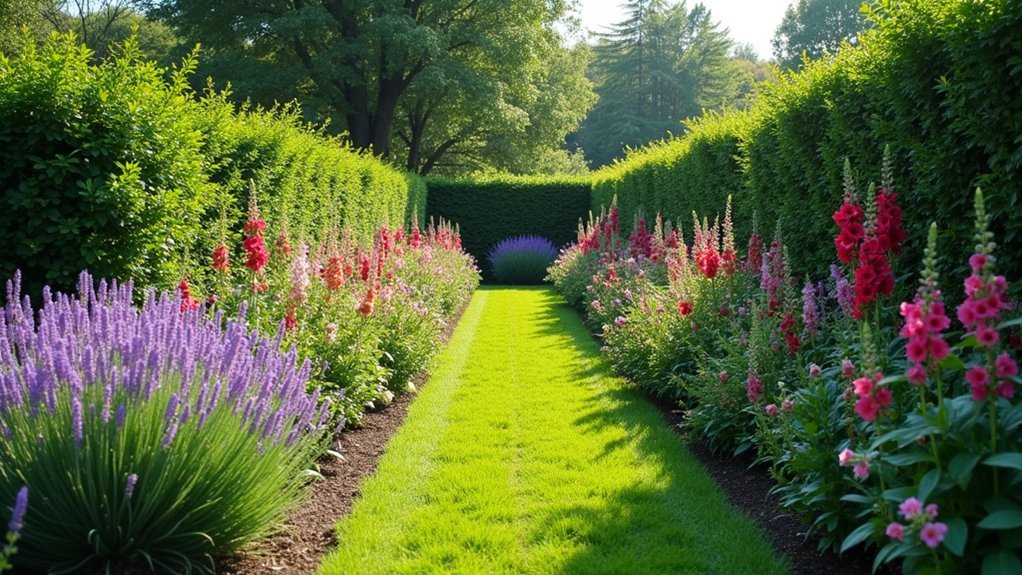

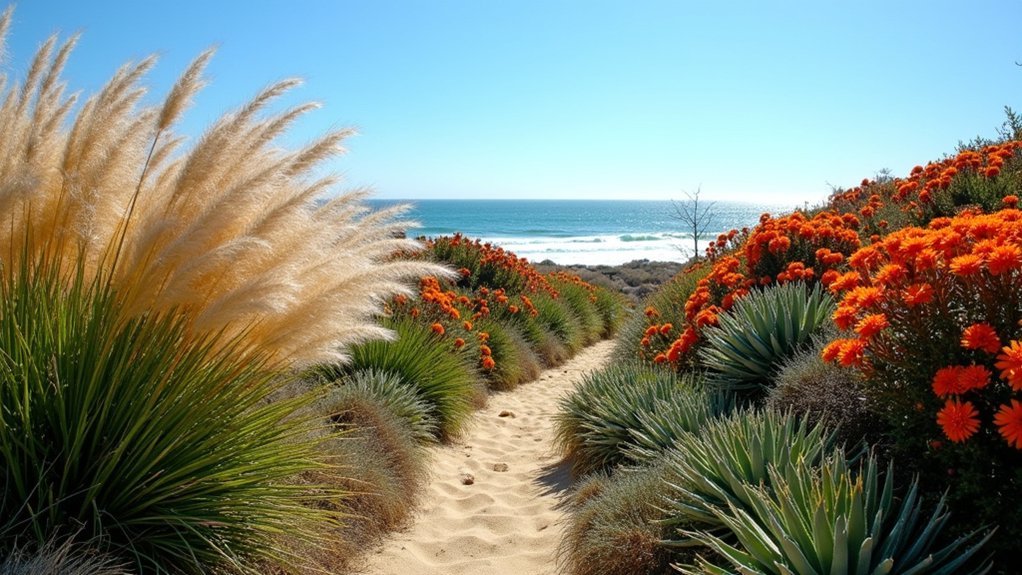
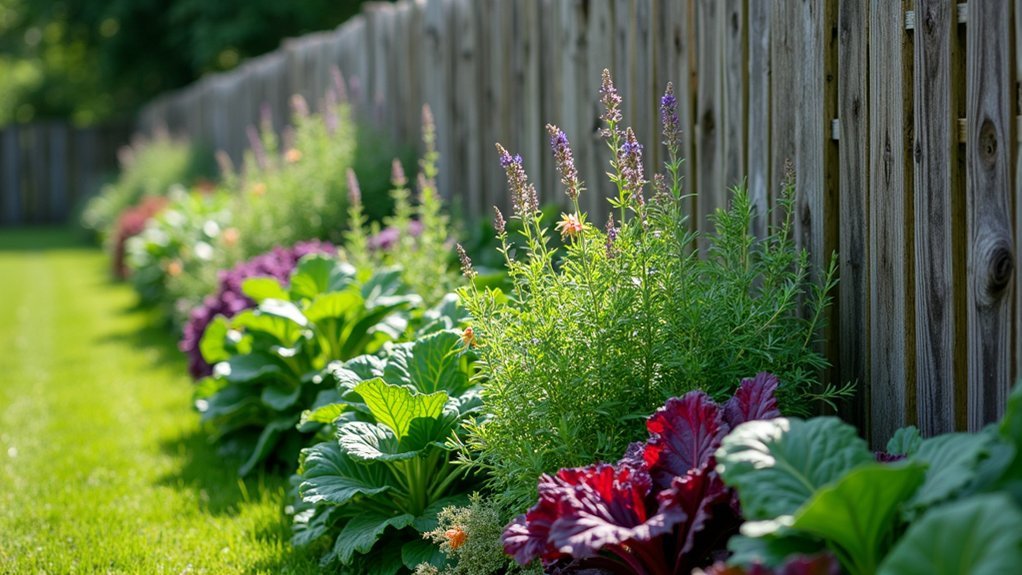
Leave a Reply